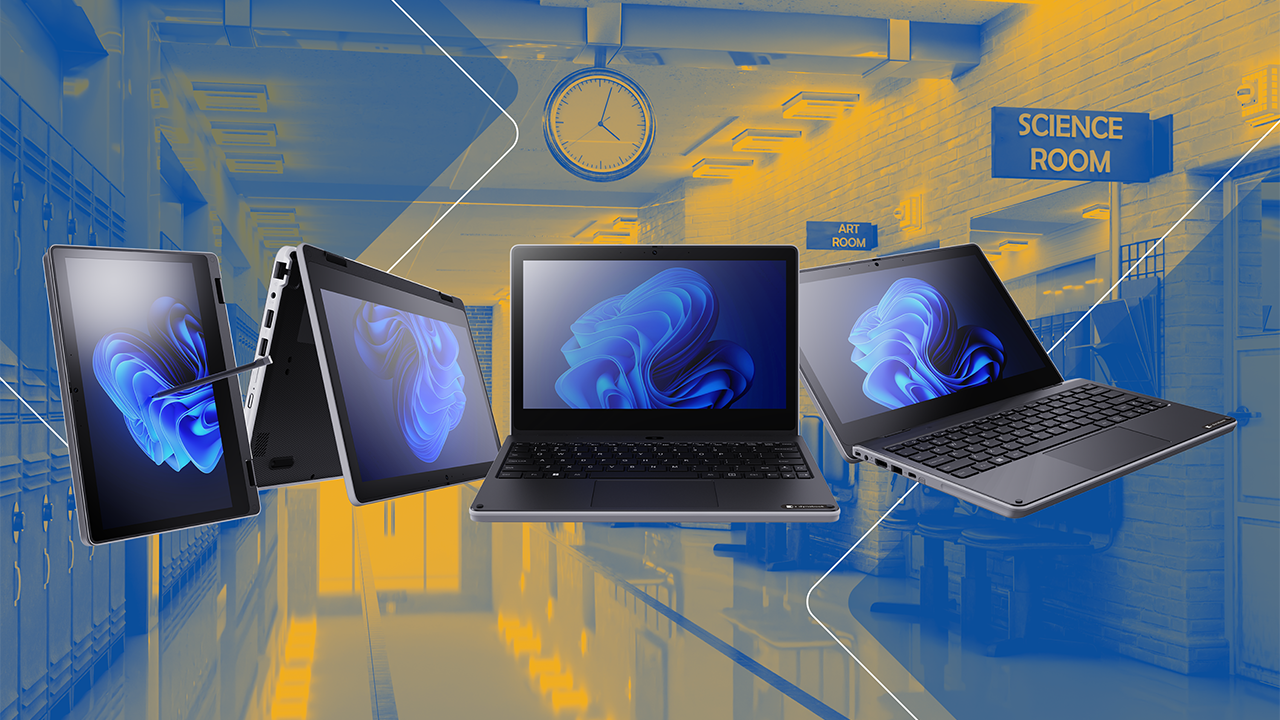Dynabook has released the E11 series of 11.6-inch notebooks for the K-12 educational market, consisting of four models across traditional clamshell and 2-1 form factors. However, instead of going toe-to-toe with the likes of Dell and Lenovo in the Chromebook space in the U.S., Dynabook is doubling down on the opportunity to be a leader in what it believes will be a growing Windows Education market in 2024.
James Robbins, general manager of Dynabook Americas, spoke with ChannelPro about the new hardware, and what he sees as a “perfect storm ready to happen in education” stemming from three market conditions coming to a head:
- Following the rapid adoption of student-issued computers in 2020, many schools and districts will be looking to refresh hardware or rethink technology decisions that were made in haste. “In that first 12 months of COVID, K-12 institutions bought 108 million endpoint devices, and that’s a mix between Chrome, Windows, and Apple operating systems,” said Robbins. “As you can imagine, those devices are now coming up on four years. And in the education space, they’re at the end of their useful life right there.”
- There is increased interest in the advantages Windows 11 brings to education, Robbins said, specifically noting AutoPilot, InTune, and remote management capabilities that closed some of the technology gap where Google had enjoyed a clear advantage. The majority of hardware purchased by educational institutions at the time, some 68 million devices, are not upgradable to Windows 11. That means much of the hardware deployed today must be replaced to leverage the advantages that Windows 11 offers.
- There’s a change in people’s feelings about Chrome and changes in Google’s cost structure. Robbins pointed out there are more recurring fees, limitations on licenses, and higher costs. “That cost model is not as lucrative as it used to be,” he said.
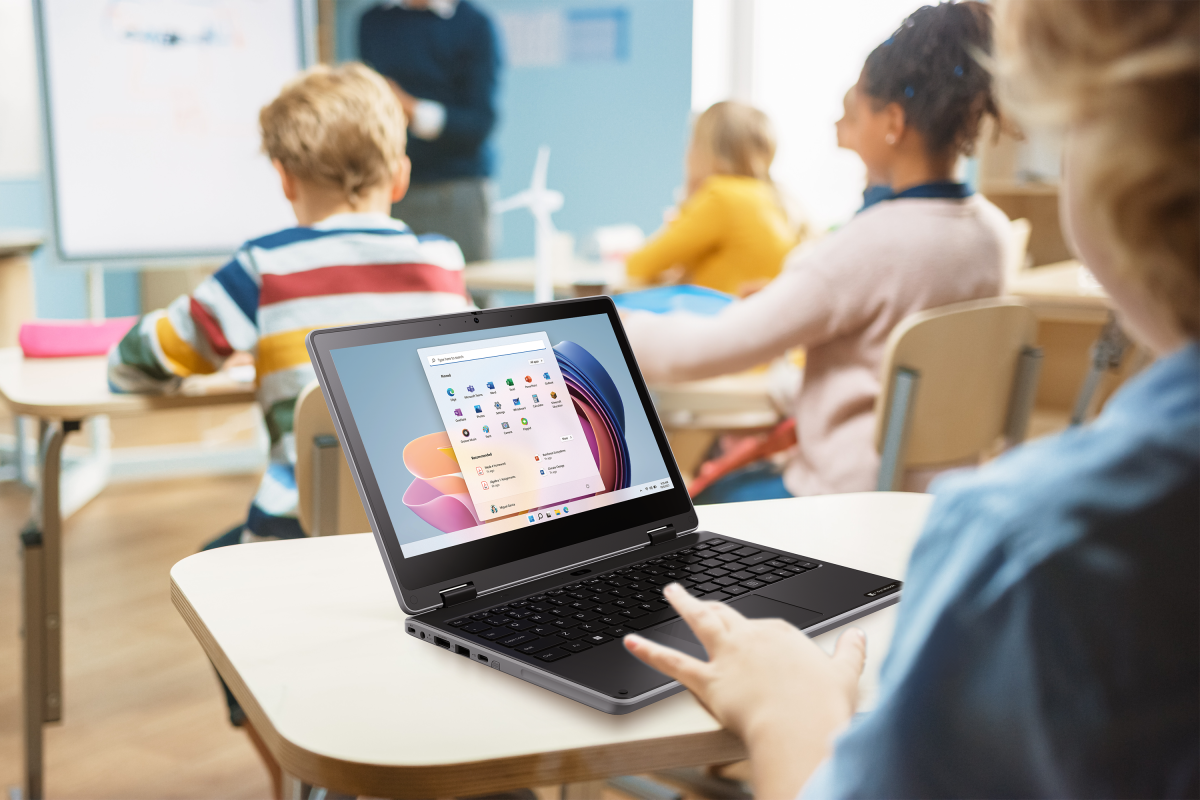
The decision to use Chromebooks, and its impact on students, is also being questioned, he said. “Schools are now starting to see the educational outcomes [are] not properly equipping their students for a successful next stage. What I mean by that is when you look at the university level, there are almost no universities at all that support Chrome, or use Chrome in any way, shape, or form.”
That lack of support at the university level continues into the workplace. Most professional organizations aren’t using Chromebooks, Robbins noted. “There’s been a couple of organizations that have tried, and some banks that initially thought they would go Chrome in the Columbus area. They bought 35,000 Chromebooks, and then six months later, a donation was made to the local high schools of 35,000 Chromebooks.”
Those market conditions may bode well for Microsoft’s educational endeavors, and Dynabook is looking to have a solid lineup of new hardware to address every facet of K-12. As expected, the E11 Series boasts significant performance and feature improvements over the aging E10 models, touching on everything from the processor to the ports.
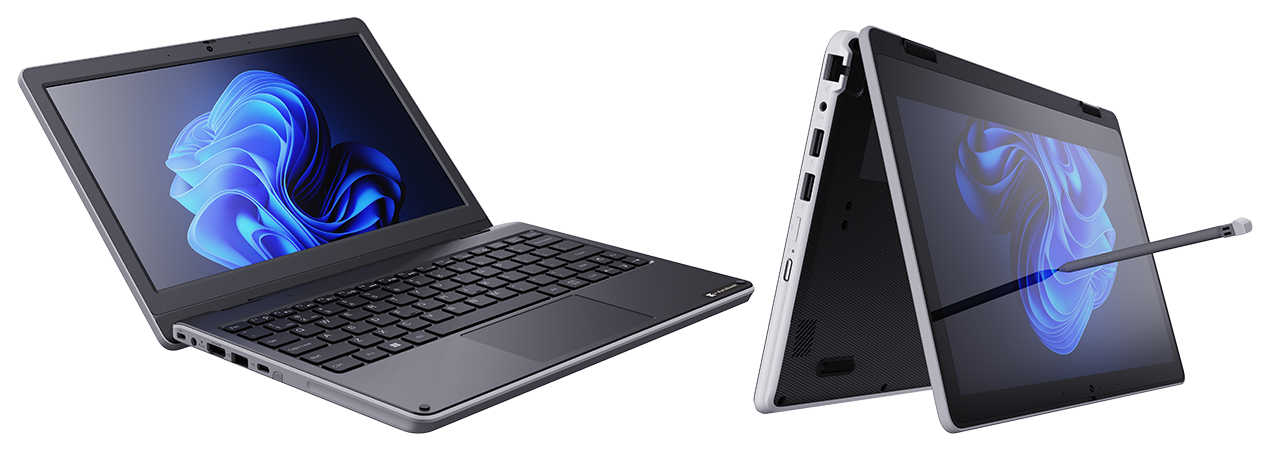
The internal refresh replaces the 2-core Celeron N4020 in the E10 Series to the 4-core Intel N100 or N200, offering a significant performance bump thanks to the extra cores, more cache, and faster max turbo frequency. Gone is DDR4 memory in favor of up to 16GB of LPDD5 to better keep up with the new processor and lower power consumption. Also included is a bump to Wi-Fi 6 for faster and more reliable connectivity. The base model includes 128GB of budget eMMC storage, though it can be configured with 256GB of faster SSD storage if desired.
Both the clamshell and the 2-in-1 models feature an HD or FHD 11.6” display with touch option, while the 2-in-1 can also be outfitted with a Windows ink compatible digital pen that is garaged and charged in the unit itself. It features a robust offering of ports for connectivity for an educational notebook, including USB-C, 3 x USB-A, HDMI, microSD, Ethernet, and more. The new webcam and dual beam-forming microphones have been added to give a better remote learning experience for students.
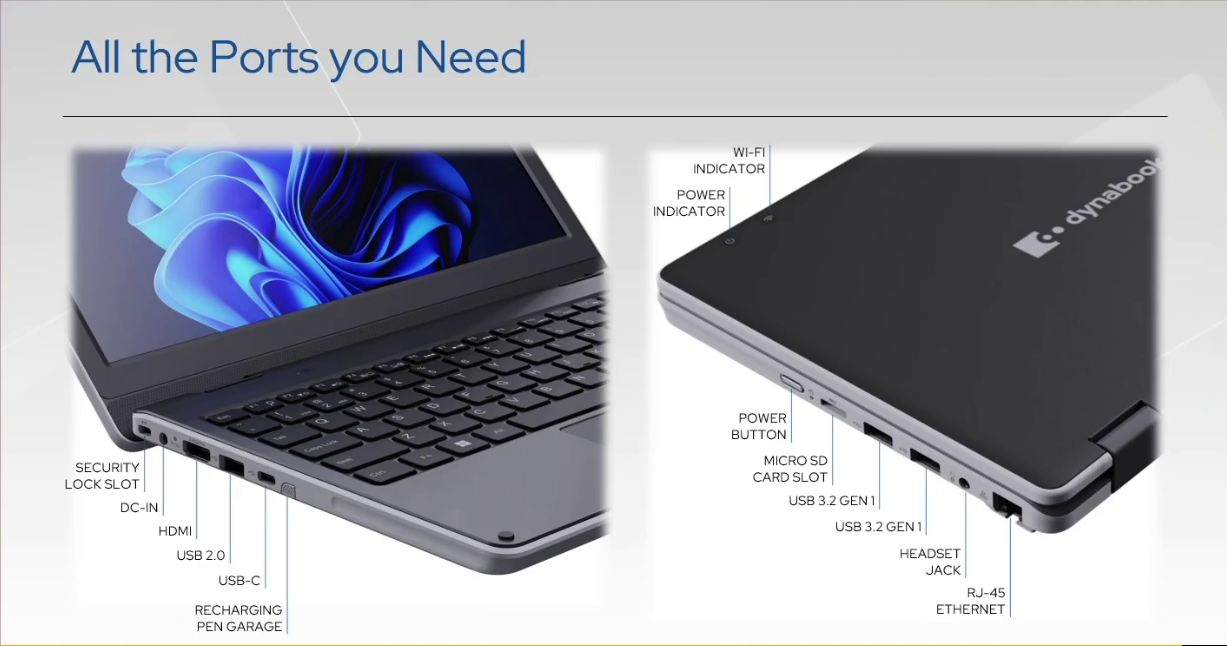
Durability is of critical importance in education. Dynabook addresses that by using slip-resistant materials, protective rubber bumpers, and by adding a spill-resistant keyboard with some effort put in to tamper-proof the keys. “One of the things that almost always happens is kids get bored and start trying to pop keyboard keys off and so on,” said Robbins. “In the E11 series, we actually have mechanically anchored keys so it is very difficult to pry a key off of the keyboard.”
Battery life is another important factor for educational notebooks, something that Chromebooks generally excel in. Robbins couldn’t comment when asked specifically about the E11’s runtime, noting that it’s something Dynabook is testing, but expects a minimum of 8-10 hours when the new line ships.
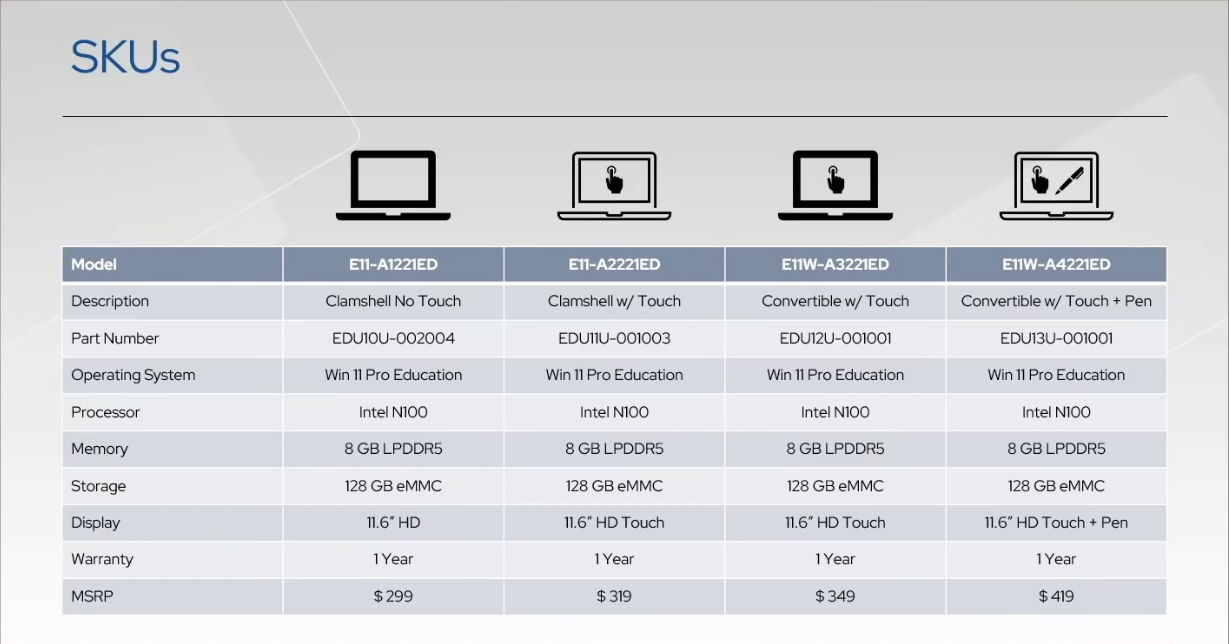
There are numerous built-to-order options for those looking to customize, but pricing for the base model clamshell E11-A is $299, and $319 for the touch option. The 2-in-1 convertible E11W-A base model includes touch and starts at $349, while the models with the digital pen option will begin at $419. Dynabook will be taking preorders for the E11 Series beginning March 1, 2024, with delivery in time for the 2024-2025 school year.
Images: Dynabook




